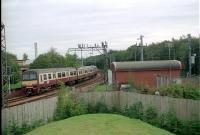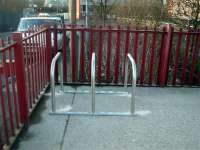Glasgow, Yoker and Clydebank Railway
Introduction
This line is open. The line was originally associated with shipyards which re-located, in 1871, from Govan (on the south bank of the Clyde) to Clydebank (formerly Barns of the Clyde on the north bank of the Clyde). The workers remained living in Govan and to get to work at the new shipyards used a ferry, the Stobcross Railway and the Glasgow, Yoker and Clydebank Railway. Initially single track.
The line was upgraded as the competing Lanarkshire and Dumbartonshire Railway of the Caledonian Railway was being completed. It was doubled, junctions altered at Whiteinch and a triangular junction created at Jordanhill and extended west to Dalmuir to become a through route. Sidings were added a stations and works. The extension was a challenging line to build as it pass under both the Forth and Clyde Canal and the Glasgow, Dumbarton and Helensburgh Railway.
Service
From 1882 a self contained passenger service operated from Partick to Clydebank [1st]. Passengers from Govan took the ferry over the Clyde and the train to reach the Clyde Bank Iron Shipyard [2nd]. This yard had relocated from Govan taking the name 'Clydebank' with it to what had been 'Barns 'O Clyde'.
Dates
| / /1878 | Glasgow, Yoker and Clydebank Railway Glasgow, Yoker and Clydebank Railway authorised. |
| 01/12/1882 | Glasgow, Yoker and Clydebank Railway Opened from Yoker Junction, Hyndland, to Clydebank [1st] (later Clydebank East). This line was used in conjunction with a ferry over the Clyde and the Stobcross Railway station at Partick for shipyard workers who lived in Govan to travel to the Clyde Bank Iron Shipyard [2nd] which had re-located from Govan. A line ran west from Clydebank [1st] into the shipyard over the Forth and Cart Canal. With the opening of the railway the Forth and Cart lost most of its business. |
| 01/08/1887 | Glasgow, Yoker and Clydebank Railway Jordanhill station opened. |
| / /1893 | Glasgow, Yoker and Clydebank Railway Extension to Dalmuir authorised, along with deviation of a portion of the Forth and Clyde Canal. |
| / /1897 | Glasgow, Yoker and Clydebank Railway
North British Railway Glasgow, Yoker and Clydebank Railway absorbed by North British Railway. |
| 01/01/1897 | Whiteinch Railway Opened to passengers. A new connection was made to the line from the west of Crow Road. This replaced an earlier line which crossed under Crow road and joined at Whiteinch Junction which was further east (to the south of Gartnavel Royal Hospital). The route of this earlier line is now built over, but was slightly further south than the existing line. The North British Railway also built a spur from a west facing junction on the Glasgow, Yoker and Clydebank Railway to a north facing junction on the Stobcross Railway. |
| 08/05/1897 | Glasgow, Yoker and Clydebank Railway
Clydebank to Dalmuir (North British Railway) Extended from Clydebank Junction to Dalmuir. The original terminus, Clydebank [1st], is left on a short branch with a east facing junction, Clydebank Junction, and is re-named Clydebank East. Dalmuir [1st] is replaced by Dalmuir. |
| 25/04/1907 | Lanarkshire and Dumbartonshire RailwayGlasgow, Yoker and Clydebank Railway Rothesay Dock Branch (North British Railway and Caledonian Railway) opened. The line was joint North British Railway and Caledonian Railway. |
| 14/09/1959 | Glasgow, Yoker and Clydebank Railway Clydebank East to Yoker (Clydebank Junction) closed to all traffic. |
Locations along the line
These locations are along the line.
This is the junction between the lines to Anniesland and Jordanhill west of Hyndland. The former is the older line, the 1874 Stobcross Railway and the latter is the Glasgow, Yoker and Clydebank Railway of 1882. Both lines are double track.
...
See also
Stobcross Railway
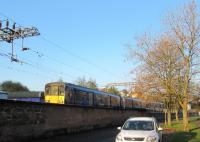
David Panton 17/11/2018
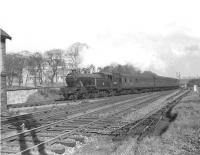
G H Robin collection by courtesy of the Mitchell Library, Glasgow 17/04/1957
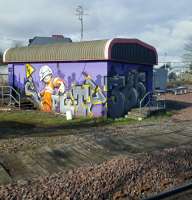
John Yellowlees 08/04/2016
This is a two platform station.
...
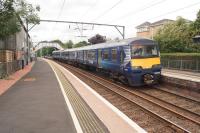
John McIntyre 12/08/2021
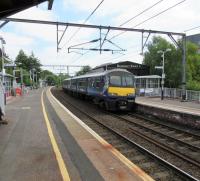
David Panton 07/07/2018
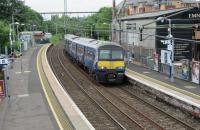
David Panton 23/06/2021
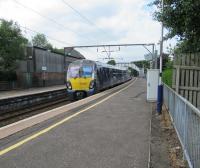
...
David Panton 07/07/2018
This junction opened in 1897, the southern end of a curve from Whiteinch North Junction. It was opened as part of the improvements to the Clydebank line which was doubled throughout and extended to Dalmuir to create a new through route. The curve, in particular, gave the North British Railway direct access to several north bank of the Clyde sites from the [[Edinburgh and Glasgow ...
More detailsSee also
Clydebank to Dalmuir (North British Railway)
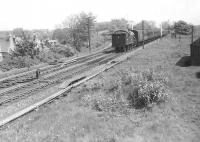
G H Robin collection by courtesy of the Mitchell Library, Glasgow 23/05/1957
This was a two platform station just east of Scotstounhill station for the nearby Glasgow Agricultural Society Show Ground.
...
This is a two platform station with the main building on the eastbound platform.
...
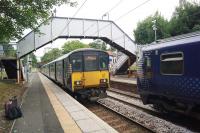
John McIntyre 12/08/2021
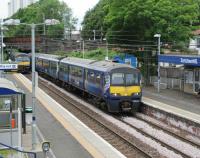
David Panton 23/06/2021
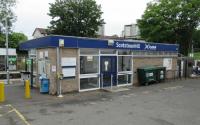
David Panton 23/06/2021
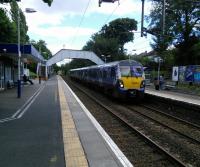
David Panton 05/08/2017
This is a relatively modern island platform station dating from 1960, the electrification of the line. The approach to the Yoker Depot starts from this station.
...
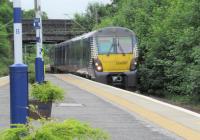
David Panton 23/06/2021
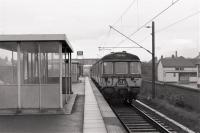
Brian Haslehust //1965
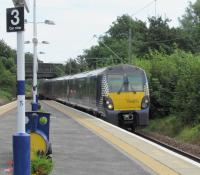
David Panton 24/08/2019
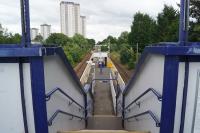
John McIntyre 12/08/2021
This junction was to the west of Scotstounhill, it led to the Rothesay Dock Branch (North British Railway and Caledonian Railway) which ran west to the Rothesay Dock on the north bank of the River Clyde. There was a large yard next to the main line by the junction. The signal box was on the south side of the main line and north side of the yard.
...
See also
Rothesay Dock Branch (North British Railway and Caledonian Railway)
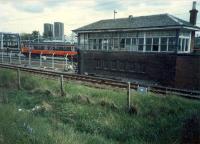
Ewan Crawford //1987
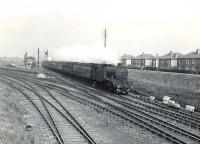
G H Robin collection by courtesy of the Mitchell Library, Glasgow 03/05/1958
This is a train servicing depot west of Garscadden station on the south side of the line. It replaced depots at Hyndland [1st] (Hyndland Depot where EMU maintenance was carried out) and Bridgeton Central (Bridgeton Depot which was a stabling and train cleaning site). It is built on the site of Yoker Yard and accessed, to the east, by the former [[Clydebank Dock East ...
More detailsSee also
Rothesay Dock Branch (North British Railway and Caledonian Railway)

Veronica Clibbery 01/01/2022
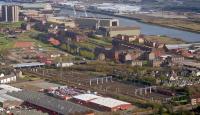
Ewan Crawford //2000

...
Veronica Clibbery 01/01/2022
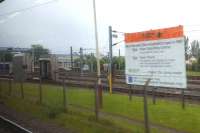
Beth Crawford 22/05/2017
...
More details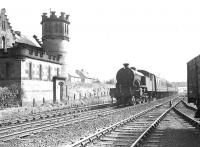
G H Robin collection by courtesy of the Mitchell Library, Glasgow 04/09/1958

G H Robin collection by courtesy of the Mitchell Library, Glasgow 04/09/1958
This is a two platform station. The booking office was at street level on the bridge over the line to the east of the station, on Mill Road. Each platform had a waiting room. No buildings survive.
...
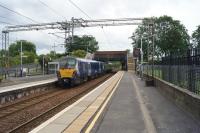
John McIntyre 12/08/2021

David Panton 07/07/2018
In 1877 Napier, Shanks & Bell opened the Yoker Old Shipyard. In 1898 the company was reformed as Napier & Miller Ltd. Amongst other vessels, the works built PS Neptune and PS Mercury in 1892 for the Glasgow and South Western Railway. It closed in 1906 to make way for the Rothesay Dock, with the company relocating to a new works Old Kilpatrick Shipyard.
...
...
More detailsThis junction was east of Clydebank East, the terminus of the Glasgow, Yoker and Clydebank Railway. This line was extended west to Dalmuir in 1897 leaving the terminus on a short branch. Both lines were double track. The newer line remains open while the original terminus is closed. The newer line gently curved away to the north of the terminal lines, the kink can still be discerned ...
More detailsSee also
Clydebank to Dalmuir (North British Railway)
This was a small brick built single road shed at the east end of Clydebank East station, originally a terminus. Approach was from the east over the shed's turntable. The shed was on the south side of the line.
...
This was a two platform terminus. This was the original terminus of the line from Yoker Junction (now Hyndland East Junction) before it was extended west via Clydebank Central to Dalmuir. The station was left as the terminus of a short branch.
...
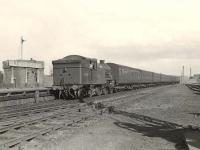
G H Robin collection by courtesy of the Mitchell Library, Glasgow 18/04/1957
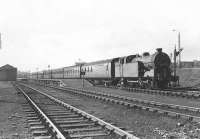
G H Robin collection by courtesy of the Mitchell Library, Glasgow 18/04/1957
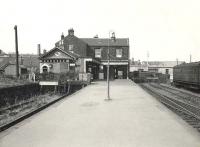
G H Robin collection by courtesy of the Mitchell Library, Glasgow 04/09/1958

Ewan Crawford //
This was the shipyard which built the Queens (RMS Queen Mary, RMS Queen Elizabeth, Queen Elizabeth 2) and many other famous ships such as the HMS Hood, RMS Lusitania and RMS Aquitania. It is the yard which lent its name to Clydebank itself and, along with the Singer Works to the north, defined Clydebank. For many, the works was John Brown Engineering.
...
See also
John Brown & Co Ltd
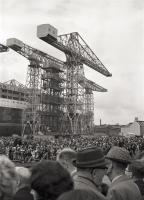
Robin McGregor 20/09/1967
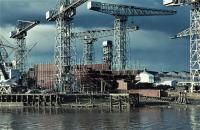
Brian Haslehust //1966
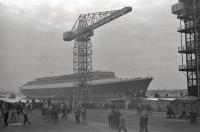
Robin McGregor 20/09/1967
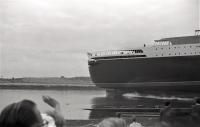
Robin McGregor 20/09/1967










